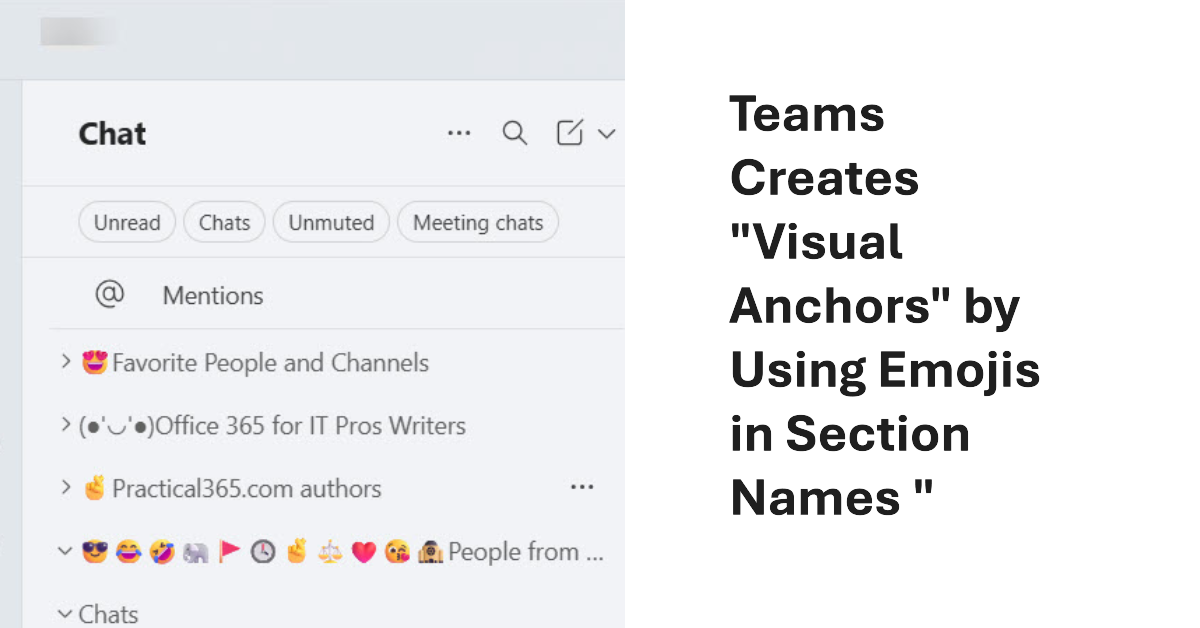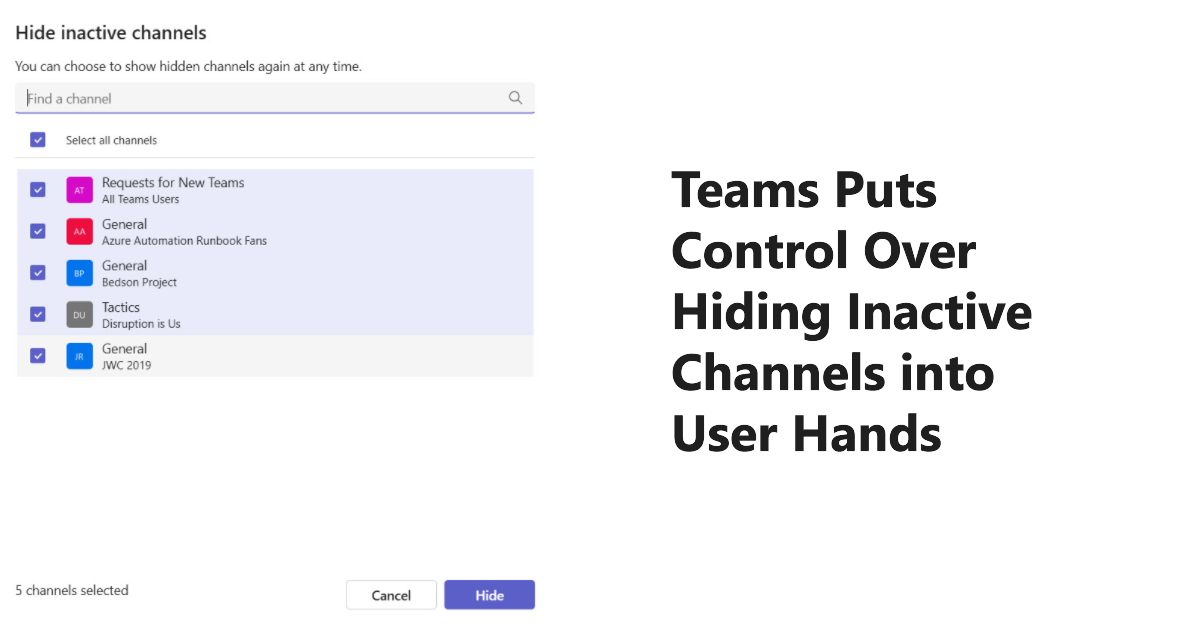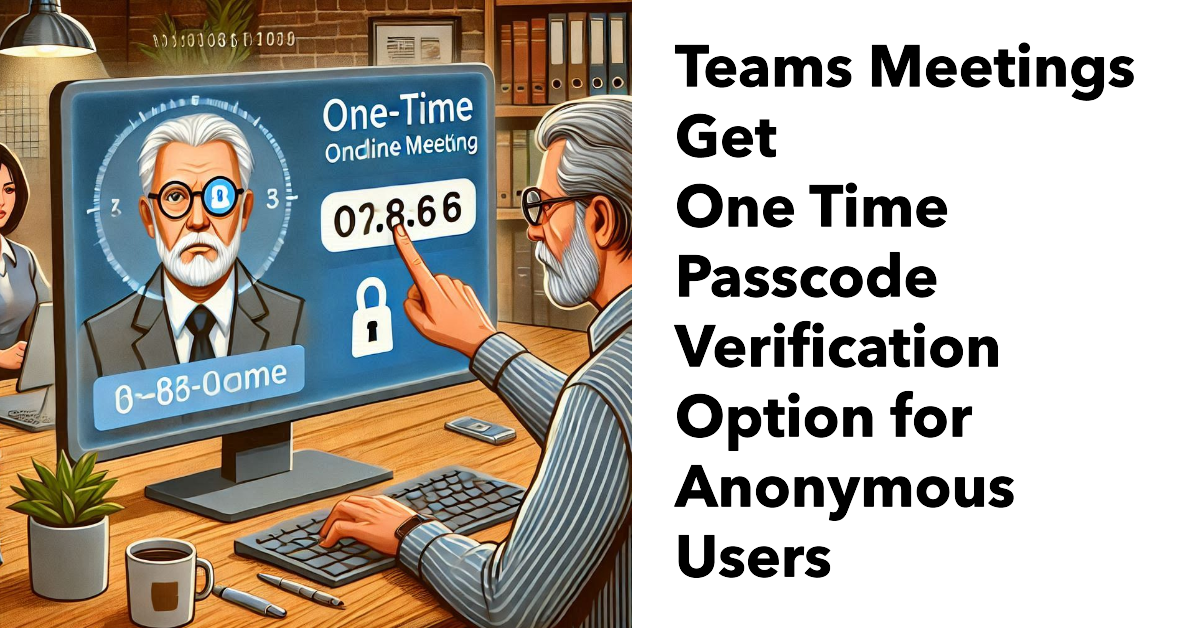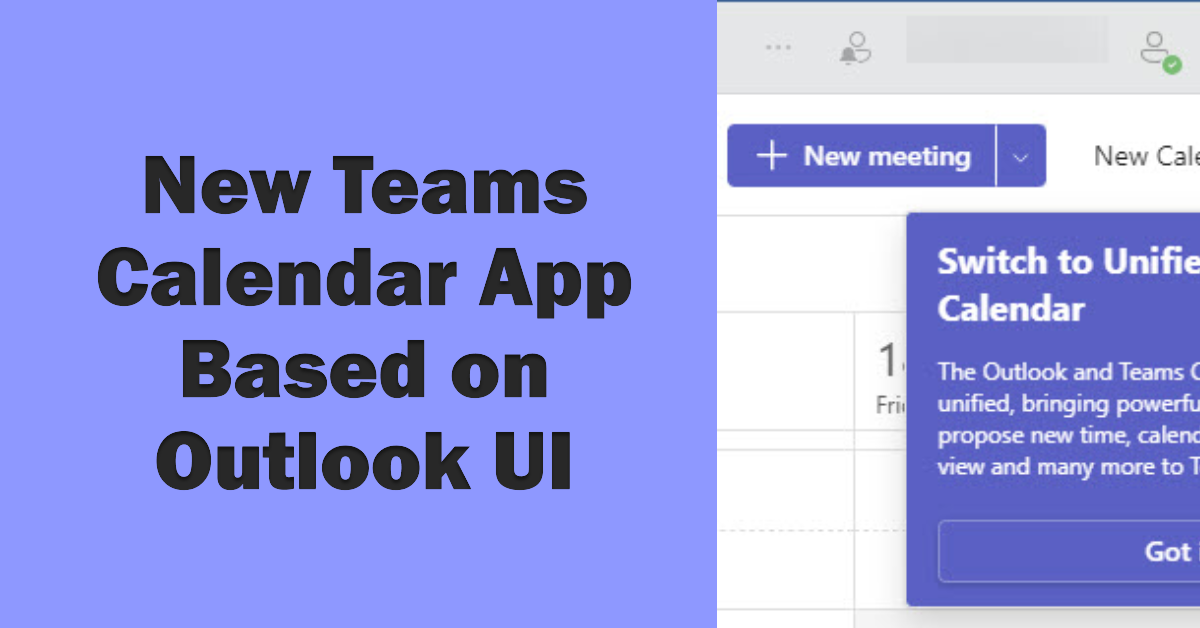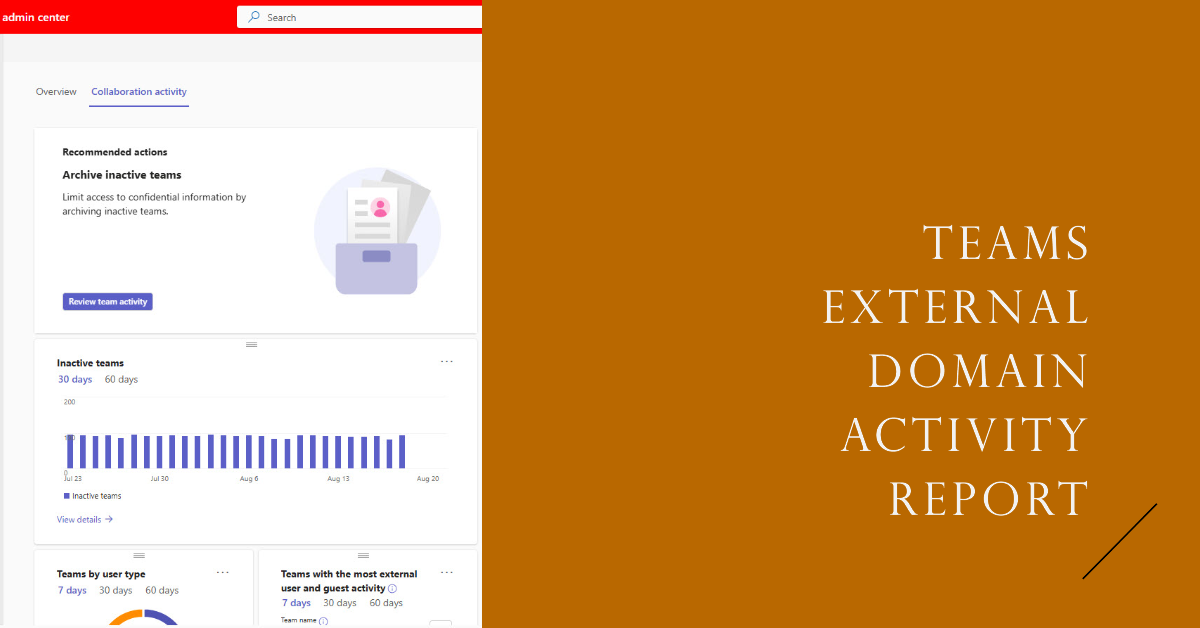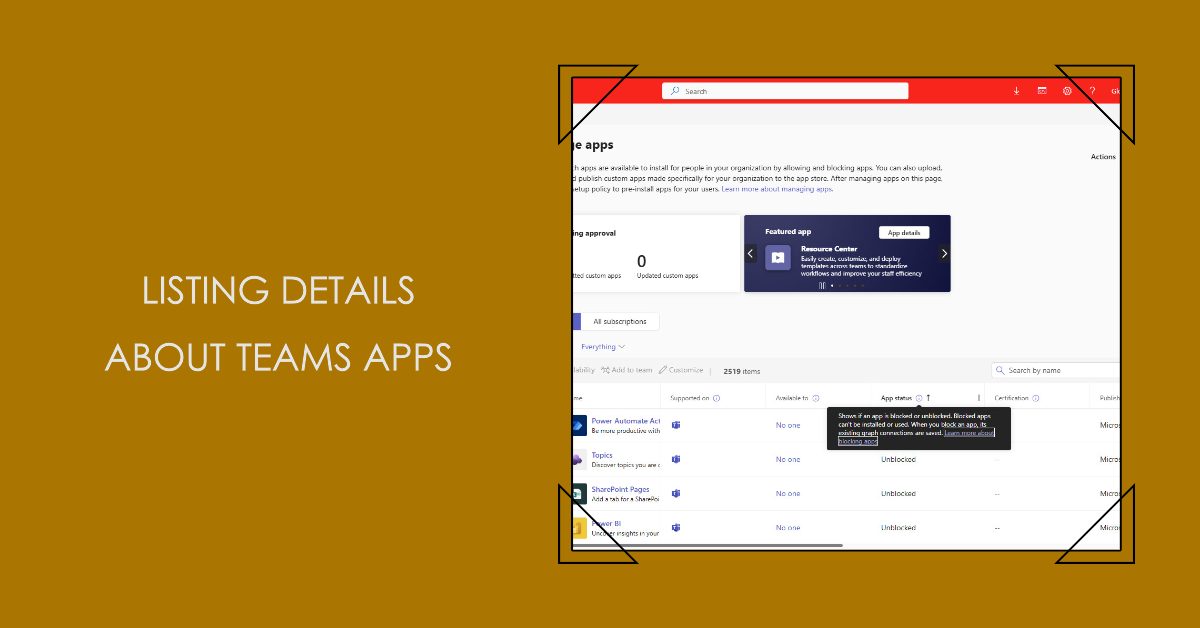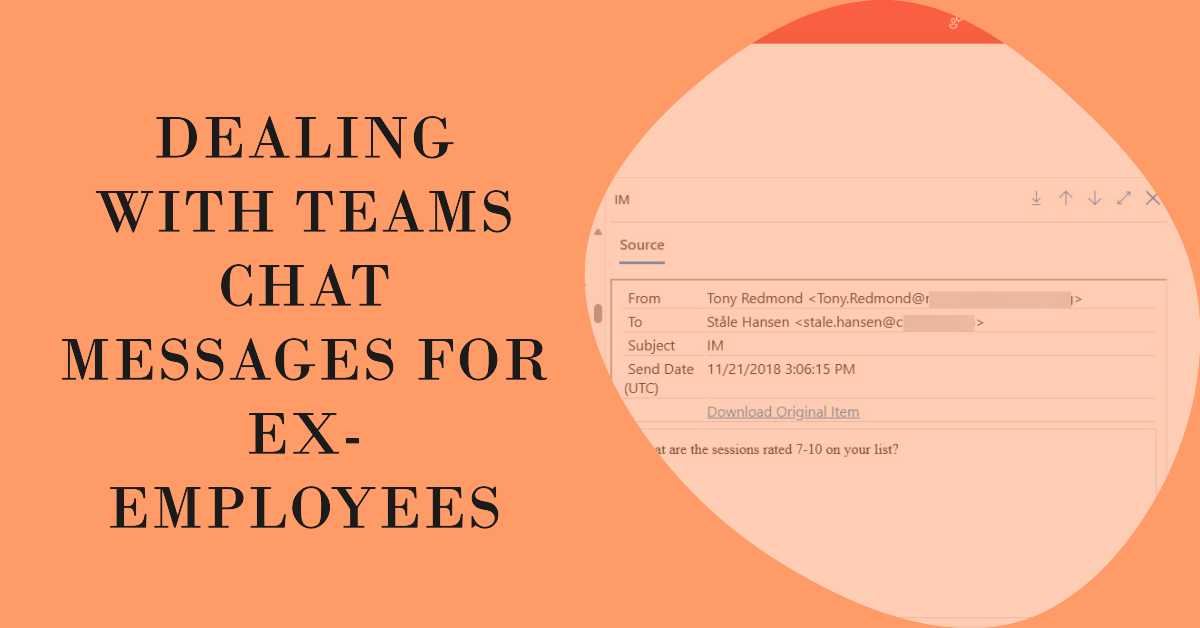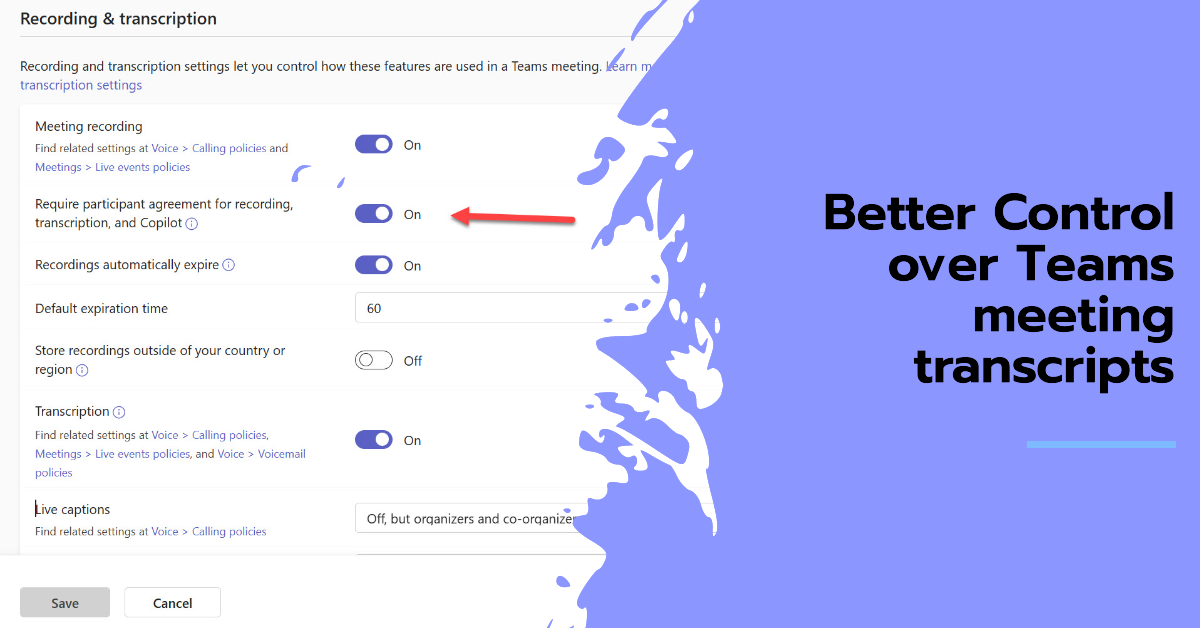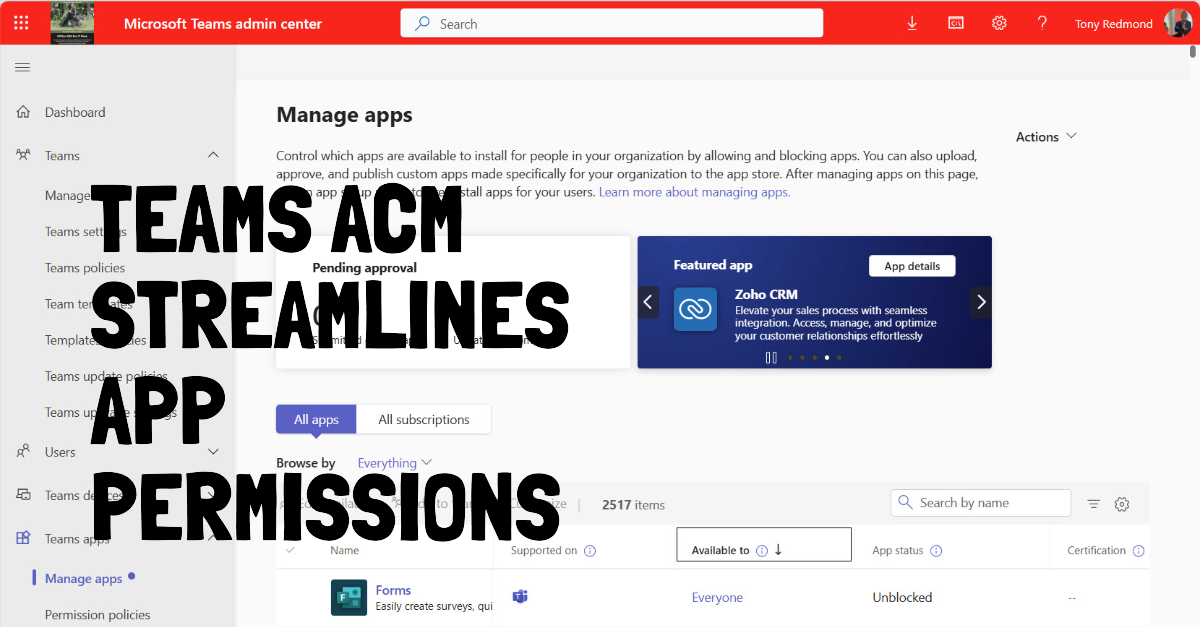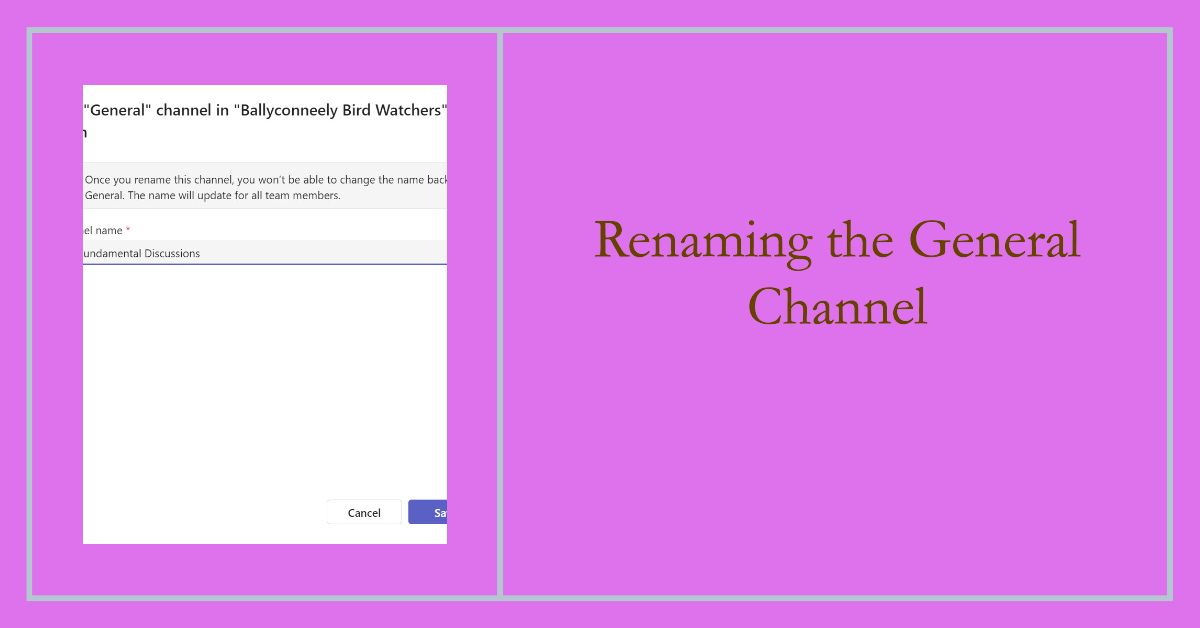As is the way of the internet, the news that a feature to automatically set the Teams work location for users created a huge fuss about the prospect that managers would keep an eye on employees based on their location. Of course, this is all rubbish. The update automates an existing feature that no sane manager would use to monitor employees.
Teams stores information in a local state file, including encrypted access tokens. A report from a French company explained how to extract and use those tokens with the Graph API. Is this important? It could be if attackers manage to gain access to a workstation, but at that point you’ve got other problems, and maybe using code to decrypt some tokens is the least of your troubles.
A new audio-only recording option for Teams meeting suppresses the video feed from meeting participants when generating the MP4 file for the meeting recording. The idea is to better preserve user privacy during recording playbacks. Few will miss the video stream because the audio is usually more important. The audio is also the basis for the meeting transcript, and that leads to AI-generated outputs like meetings summaries and action items.
Teams users can use emojis to create or rename chat section names. By incorporating emojis into section names, users create “visual anchors” to help navigate through Teams chats and channels. Sprinkling emojis around section names doesn’t really make me navigate any smarter, but it’s a feature that Slack has, so Teams can’t be left behind in the pretty interface stakes.
Attackers might attempt to use social engineering to trick Teams users in compromise. Trusted indicators help users understand the status of external users with difficult visual markers. The idea is that users will see the marker and realize that they should be less trusting in their communications. Sounds good. But maybe securing external access for Teams with a comprehensive block list is even better?
Microsoft plans to deploy an update to change how transcription behaves for Teams meetings where Copilot is enabled. New meetings will not generate a transcript unless the meeting organizer explicitly enables transcription or the Microsoft 365 tenant deploys custom meeting policies that enable transcription with Copilot. The AI features work even without a transcript. But no transcript means no searchable artifact, and that’s what some want.
This article describes the prerequisites and how to run cmdlets from the Teams PowerShell module in Azure Automation runbooks. We also consider when you’d want to consider using Teams PowerShell cmdlets instead of Graph API requests or cmdlets from the Microsoft Graph PowerShell SDK. The bottom line is that it’s possible, but maybe not a frequently-used option.
MC1134747 describes a new permissions requirement for Entra apps that run Teams PowerShell cmdlets. Fixing apps to meet the new requirement is easily done with PowerShell. First, find the apps that use Teams PowerShell (we show two ways), and then assign the two required permissions to the apps. All done with a few lines of Microsoft Graph PowerShell SDK code.
In March, Microsoft said that they’d change Teams to offer suggestions about which inactive channels a user might want to hide from client channel lists. That update is now available. There’s no tenant-wide admin control, so users must decide for themselves whether Teams will suggest which channels to hide. No detail is available how Teams decides about inactive channels, but the change to put control in user hands is welcome.
Microsoft is introducing a new KeyQL-powered capability for a revamped search box in Teams. The new implementation promises faster and more precise searching. First impressions are good, and the only doubt that I have is about how users will embrace this kind of searching. After all, some still use simple keyword searches.
The news that people can customize Teams by choosing one of ten accent colors for use in the Teams UX might or might not be positive, depending on your view. While it’s nice to see things in your chosen color, the thought might cross your mind that engineering could focus on other more important tasks… But that’s being very critical.
The need for more nuanced responses to Teams chat and channel messages can apparently be met through multiple emoji reactions instead of a basic one-emoji response like a smile or thumbs up. In any case, users can add up to 20 emojis in response to Teams chat and channel messages. The possibilities of what 20-emoji combinations might communicate are endless, or so it seems.
The Teams Discover Feed highlights unread items from channels that users might have missed. Microsoft tweaked the feature so that it only works with 5 or more channels. The logic behind the change is that if you have access to less than five channels, the Discover Feed is unlikely to be much use because it probably won’t have many unread messages to show. One limitation is that guest users can’t use the feed.
The update to allow team members to add a Loop workspace as a channel tab is now rolling out and should be available worldwide soon. Microsoft is currently putting a lot of emphasis on Loop and its almost read-time collaboration capabilities are turning up in many places within Microsoft 365, like Copilot Pages. Will Loop replace OneNote eventually? That’s a big question…
Last year, Microsoft removed the need to have a General channel in a team. Now the General channel is making a comeback, and you can choose to have one in a team. If you choose to have a General channel, it appears at the top of the channel list. If not, Teams sorts the channel list alphabetically. In other news, code snippets are being replaced by code blocks and the end of classic Teams is nigh.
Teams Windows and Mac desktop clients have started to prompt users about location privacy. Location data is used by several Teams features like the Call Quality Dashboard and emergency calling, so it’s good to allow access. These are Teams Phone features that you might not care about, but keeping an eye on location privacy is a good thing in case the data is used elsewhere.
Microsoft is tweaking the auto-hide inactive channels feature to make it less automatic and more user controllable (opt-in). It’s a good change for Teams to make. In other news, I’ve reverted to the old method of accessing chats and channel conversations because the new experience doesn’t work for me. Both situations prove how hard it is to make GUI changes to popular applications.
The Facilitator agent can make sense of the messages posted to a Teams chat and summarize the discussion and extract to-do items and unanswered questions. It’s a very practical tool that allows chat participants to focus on the ebb and flow of a conversation instead of pausing to take notes. A Microsoft 365 Copilot license is required before you can use AI Notes in Teams chat.
Microsoft has enabled a one-year retention policy for Teams meeting attendance reports. Tenants can’t opt out of the policy or set a different retention period. Microsoft says that the new policy exists to make sure that Teams complies with the Microsoft privacy policy. Another way of looking at the situation is that the new policy will simply remove some old data that no one ever looks at.
Microsoft reannounced the Teams policy to suppress certain categories of in-product advertising messages but has done nothing to control Teams pop-up messages that irritate users. The volume of pop-up messages appears to have increased, or maybe it’s my frustration level that’s rising. A simple setting to turn informational pop-up messages would be appreciated.
In January 2025, Teams will support the ability to post video clips to channel conversations in posts and replies. The feature is similar to that released for Teams chat in September 2022. It’s also similar to the ability to include a video clip in Outlook messages. Given the popularity of video clips in other apps, it’s likely that this feature will be popular with users.
Microsoft is deploying the option for meeting organizers with Teams Premium licenses to use OTP verification to allow anonymous users to verify their identity. The new option fills in a gap where external people who don’t have an Entra ID or MSA account are unable to verify their identity to join a Teams meeting. It’s a good feature, but should it be available in the basic Teams license?
Microsoft plans some big changes for Teams recording and transcription policies in February 2025. Events like webinars and town halls get separate controls for recording and transcription through the Teams event policy. By default, meeting transcription is enabled to generate transcripts for more meetings (and make transcripts available to Copilot). In addition, face and voice profile enrollment is enabled by default (important if you have Teams Rooms devices).
I’ve used Teams avatars for a couple of years but never liked them all that much. The chance to create a Teams avatar from a photo seemed like a great idea. Alas, the results obtained from uploading a professional headshot photo or from an image captured by the PC’s camera didn’t live up to expectations. The avatar is closer to my reality, but not by much.
In January 2025, Microsoft will introduce resizable Teams windows for the Windows and Mac desktop clients. This is a fundamental change to the client experience that will affect how end users interact with Teams. In a nutshell, users can resize panes like the chat list or meeting stage to a minimum of 360 pixels, which isn’t a lot. On the other hand, you can zoom a Teams window to 400%, which is definitely a lot.
A recent report noted an increase in social engineering attacks through Teams federated chat. You can stop these attacks by limiting external access to an allow list of known domains, which is what I do. Or you can depend on the technology built into Teams to detect suspicious connections and remind users about potential risk. This now extends to connections from brands commonly targeted by phishers.
Microsoft launched private channels in November 2019. A lot has happened since, and private channels don’t really get much attention these days. That’s a pity because private channels can be very useful in the right situation. I rediscovered this fact recently when working through an issue with a university where private channels were the right answer. Like all technologies, happiness comes from choosing the right tool.
The Teams calendar app is being refreshed in November 2024 when Teams takes on the calendar UI used by OWA and the new Outlook for Windows. The unified Microsoft 365 calendar experience is based on OPX and WebView and looks much better than the old Teams calendar. It makes perfect sense for the same UI to manipulate the same calendar data in both Outlook and Teams.
Microsoft announced blocked Teams federated chat for trial tenants in June 2024. That block is now well and truly enforced. If you use an account in a trial tenant (and many flavors of these accounts exist), then you won’t be able to set up a federated chat with someone in another Microsoft 365 tenant. It’s an example of how Microsoft restricts service functionality to stop misuse.
The Teams feature to hide inactive channels is now fully rolled out. Another recent change suppresses notifications from hidden channels, and this could cause a problem for people who rely on notifications to know what’s happening in a channel. Both updates are good, but some differentiation or control over notifications for user-hidden and auto-hidden channels might be good.
One of the things that vexes me is the need to change account to attend a Teams meeting. I forget this all the time and end up with unexpected waits in virtual lobbies, twiddling my thumbs while waiting for someone to admit me to the call. Sometimes I end up missing calls because people can’t admit participants from outside the tenant if they don’t have a guest account. The solution might come from the application of more intelligence and a change to the Teams UI.
Thankfully, Teams pasted text no longer contains a timestamp and the author’s name. The change is effective worldwide and addresses a longstanding irritation. Quite why it took so long for Microsoft to understand how people felt about the insertion of unwanted metadata is a mystery, but it’s gone now. And in other news, Mic Pending is a new feature for Teams calls and meetings.
Microsoft says that they plan to refresh the Teams external domain activity report from September 2024. But access to the report requires a Teams Premium license. It seems like this kind of fundamental information should be available to every tenant as it’s not basic security data instead of something that could be considered as Advanced Collaboration Analytics.
When someone leaves a Microsoft 365 organization, the possibility exists that they leave some active Teams online meetings dangling behind them. What can be done to take over these meetings and make someone else the meeting organizer? The answer is simple: nothing. Organizing a replacement meeting is one way out, but maybe it’s best to use a dedicated account to organize important company events.
A question asked about filtering Teams apps based on their blocked status. The Teams admin center doesn’t support this kind of filter and getting details of Teams apps is surprisingly difficult. For instance, you can’t get a list of the 2,500+ apps shown in the Teams admin center. PowerShell cmdlets are available to list Teams apps, but they focus on apps known to a tenant rather than the entire catalog.
Tenant administrators know that they need to deal with mailboxes and OneDrive accounts when people leave, but what about Teams chat messages? Or rather, the information stored in the compliance records captured in Exchange Online mailboxes? Reviewing chat messages can be an ardous task, so perhaps the solution might be to export the compliance records to a PST for long-term retention.
Teams meeting transcripts are enormously helpful and are used by many features, including Copilot for Microsoft 365. Access to transcript files needs good control because of the possibility of confidential information being captured in transcripts. Several recent changes made to the Teams meeting policy and meeting options help organizations to exert better control over access to transcript files.
Teams ACM replaces app permission policies with an easier method of defining who can use Teams apps. A wizard in the Teams admin center runs a one-time non-reversable switchover from app permission policies to ACM and makes sure that the permissions assigned through policy are present for each app. In other news, Teams is much better at presenting Graph permissions that apps need to run.
In what seems to be a small change, team owners can rename general channels (naturally with ‘meaningful names.’ The change is more important than it seems because it’s associated with an effort to make users think about using channels as the basis for collaboration instead of always creating a new team. Being able to rename the General channel might make the channel more useful. After all, it’s just a regular channel.
In June, Microsoft retired Office Connectors for SharePoint Online and Microsoft 365 Groups. Starting on August 15, they’re retiring connectors for Teams. The problem is finding out which teams and channels have configured connectors. That’s when PowerShell comes in handy, as we prove with a script to report which teams have connectors.



